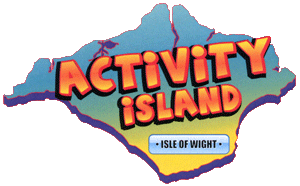
for primary and junior schools

Education at Brading Roman Villa
Brading Roman Villa provides support for education groups that visit the villa to ease the strain on teachers and maximise the pupils’ learning. There is a scheme of work that fits with the 2014 programme of study. There are worksheets and resources for teachers to use before the visit. The resources are differentiated and use a variety of approaches so that they are accessible to all types of learners (visual, auditory, kinaesthetic) and all abilities. They have been developed by a qualified teacher and refined by many primary school teachers who have already visited the villa. There is also a post visit assessment that requires the pupils to assess the impact of the Roman.
To help teachers put the villa in context there is a short history of the villa
There are 4 classroom based history activities. These are:
- A kinaesthetic starter activity leading to Artefact Handling with learning objectives and plenary questions
- An Archaeological Digging activity with a speaking and listening element. There are again learning objectives and plenary questions
- Magnetic mosaic making of the mosaics in the main villa – this is good for cooperative learning, ice breaking
- Boxes of artefacts for the pupils explore, then work out which person at the villa would have owned them
KS2 Geography can be done on site and the villa has maps, compasses and worksheets for this. So visiting pupils can do map work, contours, identification of the main features of human and physical geography as well as investigating why the Isle of Wight is suitable as a tourist destination.
KS2 English now puts emphasis on myths and legends. The villa’s mosaics provide engaging and stimulating material on; Medusa, Orpheus, Bacchus, Triptolemus and many others.
Education activities at Brading Roman Villa
This is a list of all the possible things that can be done, you can select the ones that suit the needs of your group. We anticipate that your primary focus on visiting the site will be History, but there are many other elements as well. These may only take a few minutes of your visit but can nevertheless support what you have been doing in the classroom. There are worksheets and other supporting materials at the villa for each of the options all of which can be emailed to you. To ensure that you get the best out of your visit it is possible for you to bring your own resources and we can modify ours.
The central feature of an effective school visit is good communication between us before and after to ensure that your learning objectives are met.
Key Stage 1
- History - Describe the daily life at a Roman Villa and compare with their own lives
- Geography - Identify key features of human and physical geography on a map before you go and then when you are at the site
- English - Link what the pupils saw in pictures and read about Roman Villas with what they see when they are here
- Maths - Identify 2d and 3d geometrical shapes on the outside of the building
Key Stage 2
- History - Use the visit to consolidate what has been learnt about the impact of the Romans.
Exploring a selection of artefacts to work out which person at the villa would have used them
Handling artefacts and matching them to their label, description and the inference. Then applying this knowledge to identify which person at the villa would have used the artefact. - History & Science - Archaeological digging exercise that requires the pupils to measure, categorise and make inferences about the artefacts they dig up
- Geography -Match how what can be seen at the site with how it is represented on a map. From the elevated position on the top of the cobnut plantation you can identify key features of physical and human geography. Worksheets that have photographs that the pupils use a compass to identify which direction they are pointing. Use simple compass directions (North, South, East and West) and locational and directional language [for example, near and far; left and right], to describe the location of features and routes on a map. Use the surrounding terrain to develop an understanding of contours
- English, History, IT - Use information gathered before and during the visit to produce a guidebook suitable for children
- Maths - Identify horizontal, vertical and perpendicular lines on the outside of the building, as well as the properties of geometrical shapes.





